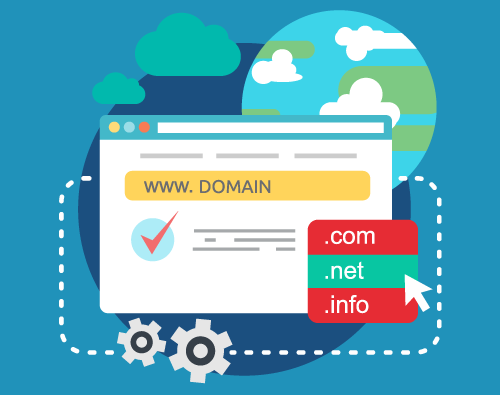
The Ultimate Guide to DNS for WordPress
Do you remember keeping a phonebook to keep a record of all the important contact numbers?
We all have done this proudly at one point in time, but not anymore. Thanks to the Internet, now we have an endless list of essential contacts. There are billions and billions of devices connected to the Internet, and the only way to keep track of these devices is through an IP address. Yet, it is almost impossible to memorize the IP addresses of different devices.
After all, how many complex numbers are you going to memorize at the end of the day!
What is DNS?
Domain Names and Internet Protocols (IP) are the building blocks of the Internet directory. A domain name helps us access information online, while an internet protocol allows browsers to interact with each other. When combined, they make up the Domain Name System (DNS). A DNS helps translate domain names into Internet protocols, allowing browsers to load resources on the Internet. DNS servers eliminate the need to memorize those complex ID addresses linked to each unique device. In short, it converts a hostname into an IP address for easy tracking and monitoring.
Without DNS, everyone will be required to memorize some random strings of numbers just to access a few websites. It is the backbone of the Internet, always working in the background, ensuring that your browser lands you on the website you searched for. DNS also enables devices to connect and websites to get served. Needless to say, DNS for WordPress is quintessential for successfully running a blog or business. It is one of the most essential aspects of Website Management that you need to learn, and we are here to guide you. This is the ultimate guide to DNS for WordPress!
1. Domain Registration
Before going forward with domain management, you need to register your domain with a domain registrar. By buying a domain name, you ensure that your website will be hosted at an IP address and that people will be directed to your website when they type in the domain name. You can choose to have the same domain as your hosting provider, given they have that option, or you can choose to use a separate domain registrar. This is your call, but it is easier and cheaper to go with one provider if you are running a single website. If you are running many websites, you can choose the domain registrar and hosting provider each of your liking.

2. Managing Domains
You will automatically get access to DNS once you have registered a domain. Make sure that your provider gives complete access to DNS so that you can use all the tools required to manage the hosting, domain, or website. You will use the following tools more frequently in the DNS’s management interface- Nameservers, A Record, CNAME, and MX record.
- A Nameserver is used to point your domain at another provider, i.e., it redirects everything from the website to email. By default, nameservers will redirect to your registrar’s server. This works perfectly if you have the same domain and hosting. But you might need to add custom name servers if your hosting provider is different.
- A Record can help direct your domain to a particular IP address. By editing A Record, only the website is redirected to a new domain (other than your default one) and not the email accounts.
- CNAME is quite similar to A Record except that it needs a domain name instead of an IP address. In other words, it redirects your domain to another domain name.
- MX record is used to specify the server where your emails are hosted. This could be different from the default hosting and could be hosted on platforms like Gmail.
3. Redirecting, Acting, and Parking
These changes for redirecting your domain are applicable only if you’re using a different hosting provider or WordPress Multisite. This involves-
Changing the nameservers
It becomes important to set custom nameservers if your domain registrar does not host your website. Your hosting server will provide the details of the nameservers required to create an account with them, a minimum of two. After doing this, you won’t be required to access your domain registrar’s default interface ever again.

Redirecting Domains
To redirect a domain to another one, you will need to use a CNAME record or A record to do the redirection.
Creating Addon Domains
Addon domain is a domain created within your existing hosting account to create an additional website. This helps you save up and run more than one website from a single hosting provider. This can be done in the cPanel of the hosting provider, creating a subdirectory corresponding to that domain.
Parking Domains
A Parked domain is different from an addon as it doesn’t create a folder for a new website. This is just another option used to point a domain at your website while giving you access to various domain management tools. This can also be done in the cPanel of your provider and by adding a domain that you want to park.
4. Domains and Emails
Domain names apply to all your email accounts and are not just limited to the website. You can choose to host your email on the same server or go with a different one. WordPress users generally prefer to host their emails on servers like Gmail for many reasons.
a) It has a better interface, b) Gmail is quite easy to access online, c) it is quite easy to add an email using Gmail to client devices, and d) because the email keeps running even if the website goes down.

To host your email on a different server, you will need to use an Mx record via your domain registrar’s interface or in cPanel. Once you’ve done that, you will be required to add your domain to your Google apps account and pay an annual fee.
5. Tracking Domains
After applying the many changes mentioned above, it becomes essential to keep an eye on your domain. Your domain may end up doing something it’s not meant to do, which makes it important to track them. You can use DNS checkers like what my DNS, which lets you track everything from nameservers, A record, CNAME, Mx record, and how they are resolving. This makes it easy to identify issues from different parts of the world.
Conclusion
DNS can be a bit of a headache. It might take days to sort everything mentioned above. While it is important to understand what DNS is and what aspects of DNS impact your WordPress website, the entire process needs a lot of patience on your part. If you would rather have someone do this for your website, we at Helpbot might be able to help you out. With our express WordPress Management Services, you will be able to create a new site, change the domain, move to a new hosting provider, or buy new domain names seamlessly and without any hassles. Our services are available at different prices to suit your budget; take a look, and schedule a call today!





